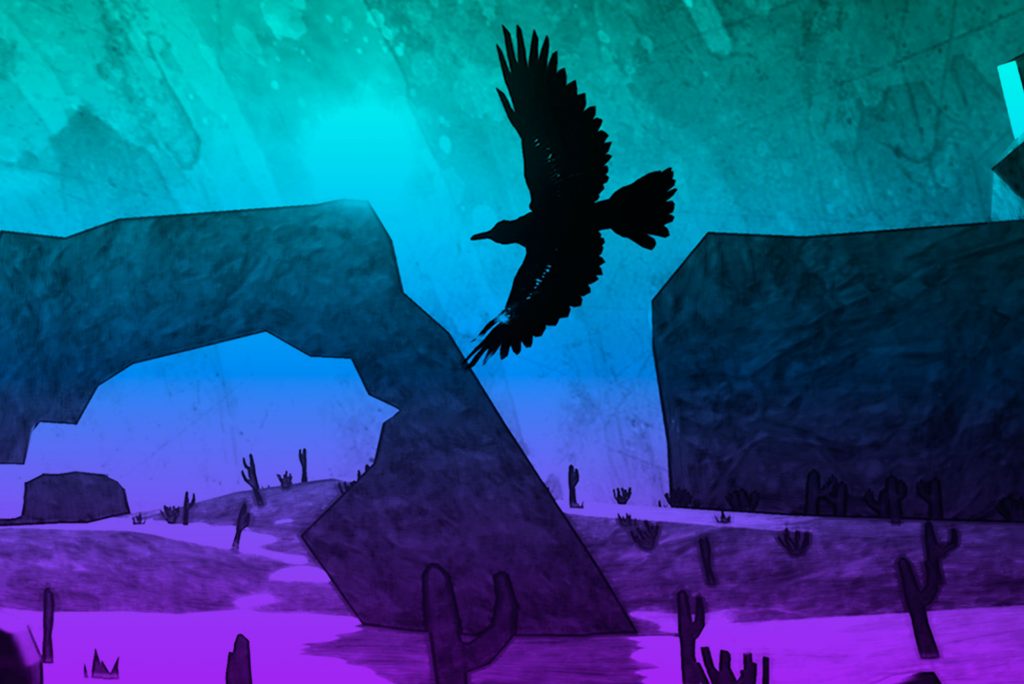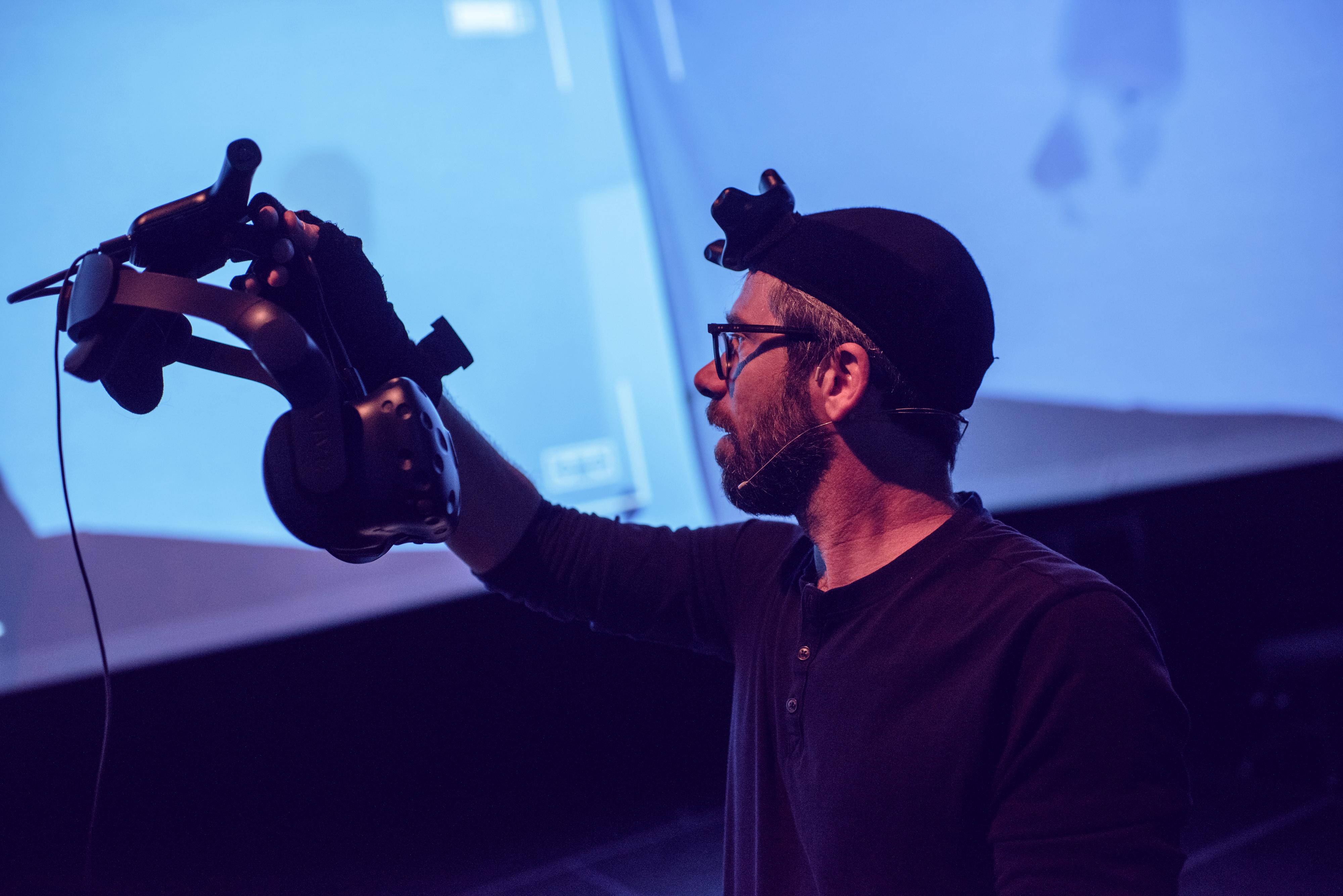Fatherland
A solo performer and a whole heap of computing power bring to life the story of an elderly man with dementia, his conspiracy-theory minded son, and their Mexican carer.
Real-time motion capture performance merges with audience participation, live video-projection and virtual reality to create a pioneering theatrical experience exploring disembodiment in the modern world.
The performance is motion captured in front of the audience’s eyes, with the virtual world created live and projected on to large screens. Volunteers are invited onstage to wear a VR headset. The volunteer’s point-of-view becomes one of the “cameras” for the unfolding story, in this live multiscreen show. What the volunteer sees, the audience can see. And the audience sees what the volunteer cannot—the reality of the stage.
The Story
There is a story inside Ben’s head—technology is going to help him share it. His voice speaks from an old cassette player. But his body, fitted with motion trackers, can become, anything, anywhere, in a shared virtual world. Ben invites an audience member onstage to wear a VR headset, and into a virtual desert, because westerns remind him of his father and he wants to tell you a story set in the American West…
Wayne works at Walgreens, lives alone with his incapacitated father and wants to fire Esperanza, his father’s carer. Frustrated, Wayne concocts his own conspiracy theory about why his father is ill—a theory that involves witches, giant pharmaceutical companies, and the neighbourhood crows. Fuelled by internet deep dives, Wayne’s theory sends all three characters on a journey across California, where Wayne’s paranoid Twitter feed collides with migrant farmworkers, 4G masts and a sacred Native American mountain.
Wayne’s indignation is a reflection of the frustration Ben feels in the face of his own father’s worsening dementia. Emotions that in the real world Ben cannot express. Is Wayne’s story a way of confronting his own truth… or running away from it?

Creators Statement
The project began when I was daydreaming about how to make live theatre with motion capture technology. My father, who suffers from Parkinson’s-induced dementia, was napping on the sofa behind me. Motion capture transforms and transports physical information from our body. In that process of disembodiment, I saw my father reflected—his body in one place, his mind in somewhere else.
We live alongside each other, but in different worlds…
Fatherland is a journey to discover that place somewhere else—a journey that leads to the realisation that, in a networked world, we all increasingly exist in spaces outside of our physical body. The emotional impact of working with this personal material, combined with the themes implicit in the technology, opens up a series of intriguing, resonant questions: In a world that increasingly invites us out of our bodies, where does reality sit?

Developed in Collaboration with the
Supported by:
Additional Support from:








